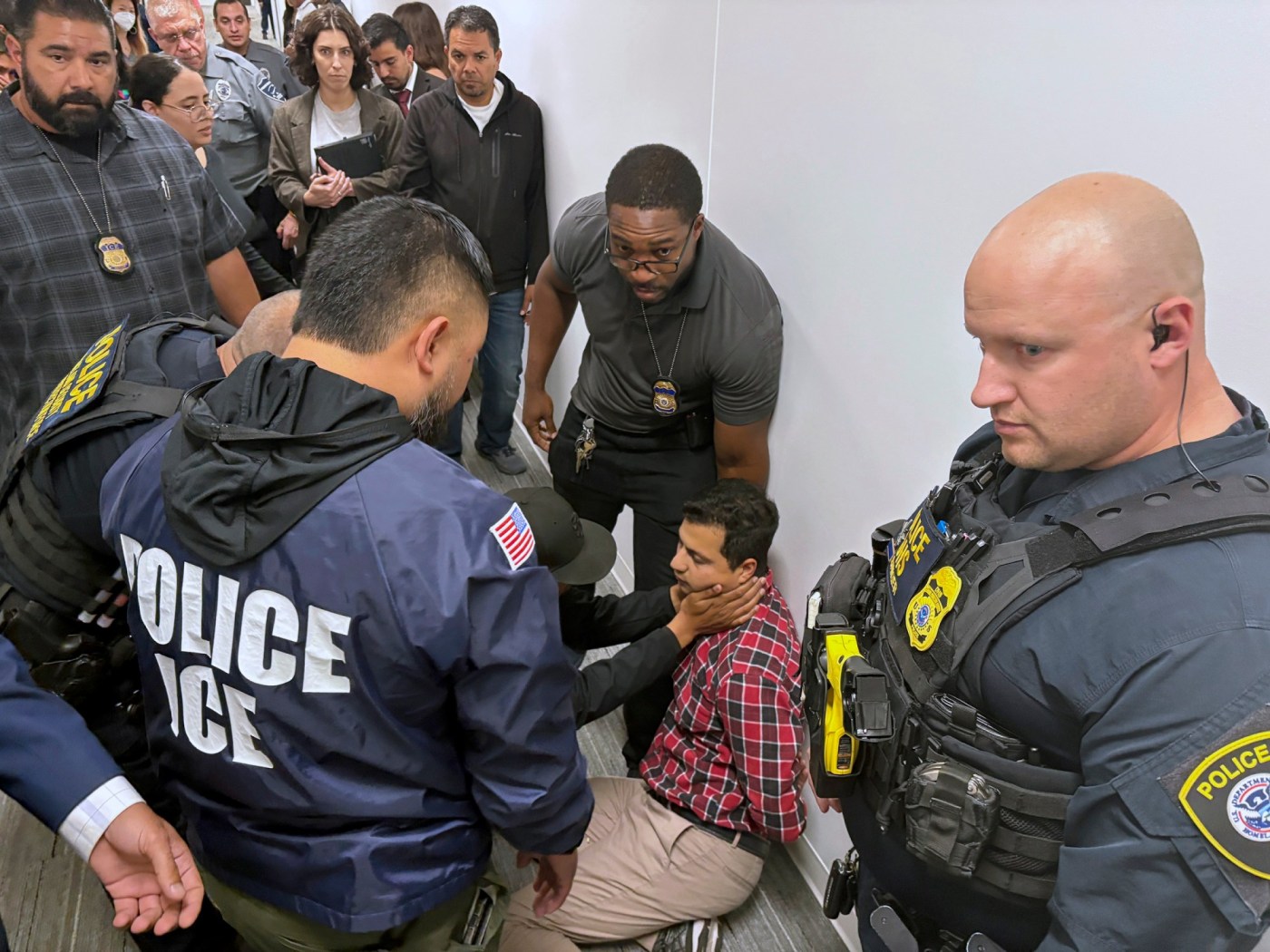ICE Arrests in San Diego: A Data-Driven Analysis of Trends and Impacts

In the first six months of the Trump administration’s intensified deportation efforts, more than half of the U.S. Immigration and Customs Enforcement (ICE) arrests in San Diego and Imperial counties involved individuals with no criminal charges or convictions. This data, obtained by the Deportation Data Project through public records requests, offers a detailed look at the enforcement patterns under President Donald Trump’s immigration crackdown.
ICE’s San Diego field office, which covers both San Diego and Imperial counties, has seen a significant increase in arrests, nearly doubling compared to the previous year. The data reveals that most of these arrests involve Mexican nationals. From January to early June, 1,042 arrests were made, compared to 602 in the same period last year and 191 in 2023.
Shifting Focus in Enforcement
The data highlights a notable shift in enforcement priorities. This year, approximately 53% of ICE arrests in the region were of individuals without any criminal charges or convictions. This marks a departure from the previous year, where 74% of arrests involved individuals with criminal convictions or pending charges. The Trump administration initially emphasized targeting those with criminal histories, but recent figures suggest a broader approach.
“The focus is on criminal aliens that have violated the laws of the U.S. and put the American public in harm’s way,” the ICE ERO San Diego field office stated in January.
However, the percentage of arrests involving non-criminal individuals surged in May and June, reaching 62% and 76% respectively. This change coincides with reports of a daily arrest quota set by the Trump administration, aiming for 3,000 arrests, as reported by several media outlets, including NBC News.
Community Impact and Response
The increase in non-criminal arrests has sparked concern among local human rights advocates. María Chávez, the immigration legal director at the Partnership for the Advancement of New Americans (PANA), suggests that the quotas indicate a shift away from targeting individuals with criminal records.
“Statistics show that, compared to U.S. citizens, immigrants commit very few crimes,” Chávez noted. “If there aren’t 3,000 criminals to arrest per day, who are they going to go after to meet those quotas?”
Adriana Jasso, coordinator for the U.S.-Mexico border program with the American Friends Service Committee, observed cases of “collateral arrests,” where individuals not initially targeted by federal agencies were detained. She noted that many of these individuals likely had no criminal history.
Official Stance and Data Discrepancies
In response to the findings, an ICE spokesperson emphasized the agency’s commitment to clearing the backlog of illegal aliens who pose a threat to community security. The Department of Homeland Security (DHS) has refuted claims that ICE is not focusing on individuals with criminal records, asserting that many undocumented migrants are involved in serious offenses, even if they lack a criminal record in the U.S.
As of June 30, the Trump administration claimed to have arrested over 273,000 undocumented immigrants nationwide. However, ICE data obtained by the Deportation Data Project shows fewer arrests, closer to 95,700 since Trump took office.
Meanwhile, Mexican nationals accounted for 65% of local ICE arrests this year. Consul General of Mexico in San Diego, Alicia Kerber, attributed this to the large Mexican immigrant population in the area. She assured that consulate representatives visit detention centers daily to ensure community rights are protected.
Broader Implications and Future Considerations
Another enforcement shift was noted in late May, when individuals attending immigration hearings were arrested upon exiting court. This tactic, observed in other cities, involves dismissing cases to expedite removal processes. Chávez reported that three of her clients were arrested outside immigration court, none with criminal records.
In a recent development, a group of six California Republican legislators urged President Trump to focus immigration enforcement on undocumented immigrants who have committed violent crimes. They also advocated for a pathway to legal status for non-criminal individuals with strong community ties.
“We have heard from employers in our districts that recent ICE raids are not only targeting undocumented workers but also creating widespread fear among other employees,” the legislators wrote in a letter to Trump.
As the debate over immigration enforcement continues, the data from San Diego and Imperial counties provides a crucial lens through which to examine the impacts of federal policies on local communities. The evolving strategies and their implications will likely remain a focal point for policymakers, advocates, and affected individuals alike.






